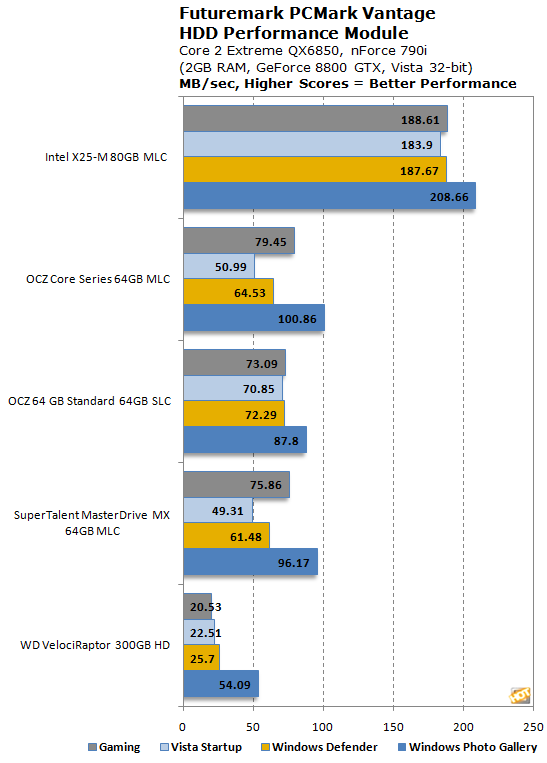Intel X25-M 80GB SSD, Intel Ups The Ante
PCMark Vantage HDD Testing

Next we ran the new Intel SSD through a battery of tests in PCMark Vantage from Futuremark Corp. We specifically used only the HDD Test module of this benchmark suite to evaluate all of the drives we tested. Feel free to consult Futuremark's white paper on PCMark Vantage for an understanding of what each test component entails and how it calculates its measurements. For specific information on how the HDD Test module arrives at its performance measurements, we'd encourage you to read pages 35 and 36 of the white paper.
|

The margin of gain with the Intel SSD is unmistakably huge. However, we should note that, for example, when we actually imaged each of the SSDs tested with a clean Windows Vista SP1 installation, and then measured boot times manually, we observed that all SSDs in this group booted Vista to a desktop in a little under 20 seconds. The Intel SSD did seem to shave a second or two off boot time but it wasn't nearly as prominent as these Vantage HDD test bar graphs suggest. That said, we'd offer that you should interpret the available upside bandwidth with the Intel X25-M as offering room for growth. For example, as your drive becomes loaded up with data or you install applications that may require OS start-up support in Vista, you'd likely find that the Intel SSD would offer more throughput. This same correlation can be drawn for all of the other tests here as well.






